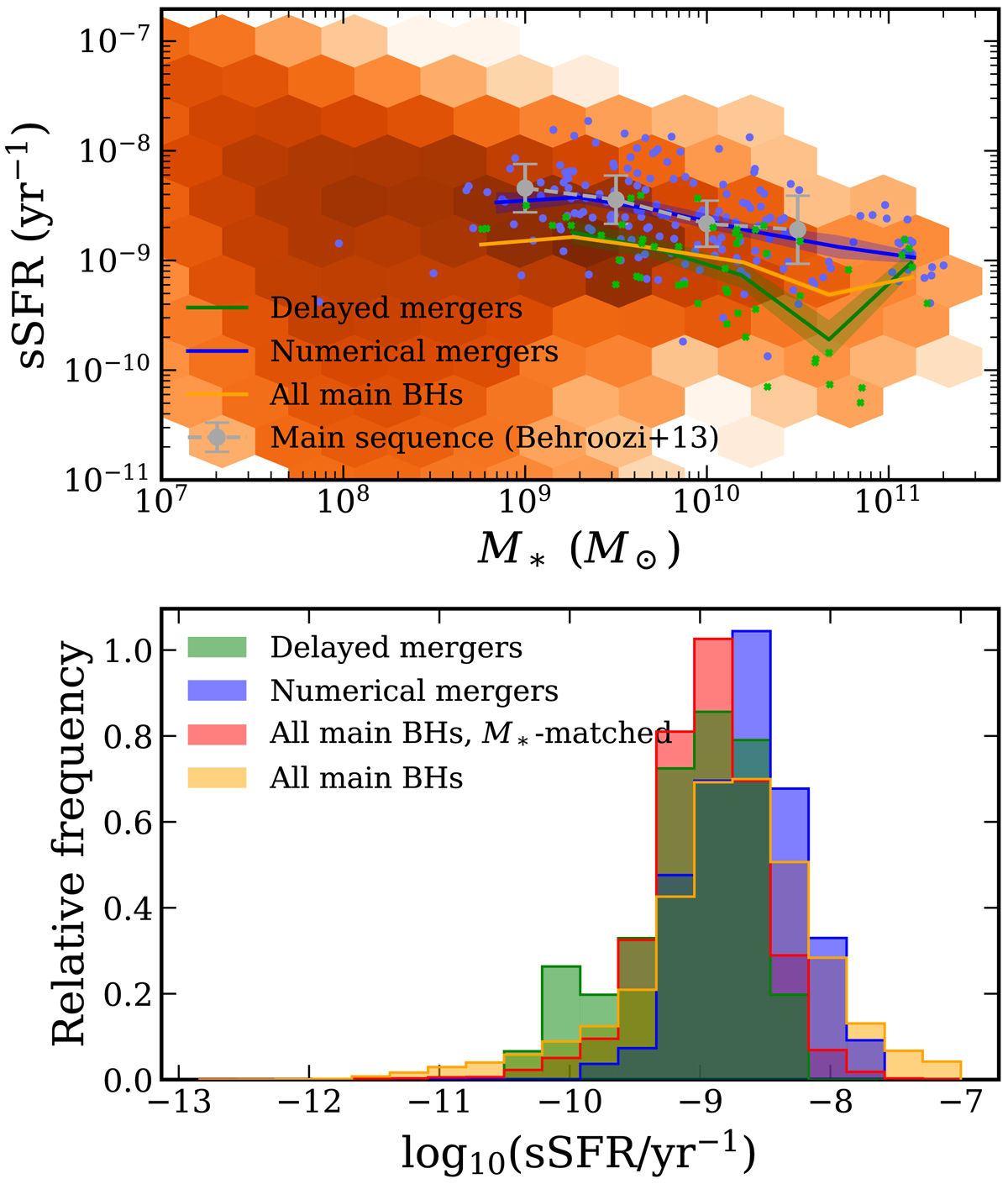Fig. 5.

Download original image
Star formation rate of BH merger hosts compared to the global population of galaxies. Top panel: sSFR against stellar mass M* for delayed merger hosts (green crosses), numerical merger hosts (blue points), and the global population of main BH hosts (orange hexagons), at redshift 3.5 < z < 4. For the hexagons, darker colours correspond to higher density of points. The geometric mean of sSFR in several bins of M* is shown by the solid lines for the three samples of BHs, with shaded regions corresponding to the 1σ standard error in the mean. Bottom panel: The distribution of sSFR for delayed merger hosts, in green, numerical merger hosts, in blue, and for the global main BH host population, in orange, at redshift z = 3.5 − 4. We show in red the global main BH host distribution weighted by a factor pdfNM(log10M*)/pdfall(log10M*). Numerical mergers reside in galaxies with elevated sSFR, a residue of SFR enhancement caused by the galaxy merger. Delayed mergers reside instead in galaxies compatible with the global population since sufficient time has elapsed from the galaxy merger for its effects to have vanished.
Current usage metrics show cumulative count of Article Views (full-text article views including HTML views, PDF and ePub downloads, according to the available data) and Abstracts Views on Vision4Press platform.
Data correspond to usage on the plateform after 2015. The current usage metrics is available 48-96 hours after online publication and is updated daily on week days.
Initial download of the metrics may take a while.


